Description
Unleash Ultimate Marine Power: Twin Honda 250hp iST Outboards
Revolutionary twin-engine setups are transforming how serious boaters approach offshore adventures – but most marine enthusiasts are missing out on the game-changing performance of Honda’s intelligent technology.
Every experienced boater knows the frustration: you’re 20 miles offshore when your single engine starts acting up, leaving you stranded with limited options. Or maybe you’ve watched competitors effortlessly outmaneuver you in tight marina spaces while you struggle with basic docking. The solution that’s revolutionizing marine propulsion isn’t just about raw power – it’s about intelligent twin-engine systems that deliver unmatched reliability, fuel efficiency, and control.
The Twin Honda 250hp iST outboard configuration represents the pinnacle of modern marine engineering, combining Honda’s legendary reliability with cutting-edge Intelligent Shift and Throttle technology. This comprehensive guide reveals why savvy boat owners are choosing this setup over traditional single-engine configurations and competing twin setups. You’ll discover specifications that matter, real-world performance benefits, and insider tips for maximizing your investment in premium marine propulsion.
Explore our complete outboard inventory to see how Honda’s technology compares with other premium brands. For those considering alternatives, our Yamaha F250 selection offers compelling comparison points.
Why Twin Honda 250hp iST Outboards Dominate Modern Boating
The marine industry has witnessed a dramatic shift toward twin-engine configurations, with Honda’s BF250 iST leading this revolution. Unlike traditional single-engine setups that leave you vulnerable to complete power loss, twin Honda 250hp iST outboards provide redundancy that could save your life in emergency situations.
Honda’s exclusive iST (Intelligent Shift and Throttle) technology transforms how you interact with your engines. This sophisticated system integrates electronic throttle control with precision shift management, delivering smoother acceleration, reduced vibration, and enhanced fuel efficiency compared to conventional mechanical controls. The technology automatically optimizes engine performance based on operating conditions, ensuring maximum power when you need it and optimal economy during cruise conditions.
The 250hp power rating from Honda’s 3.6-liter VTEC V6 engine delivers exceptional torque characteristics throughout the RPM range. Peak power occurs at 5,800 RPM, but the engine’s broad powerband ensures strong performance from idle to redline. This translates to superior hole shots, sustained high-speed performance, and the ability to maintain plane with heavy loads or challenging sea conditions.
Twin-engine configurations offer maneuverability advantages that single-engine boats simply cannot match. Independent throttle and shift control allows for precision docking, tight-radius turns, and enhanced control in challenging conditions. When you’re navigating crowded marinas or backing into tight slips, the ability to use differential thrust becomes invaluable.
For serious offshore enthusiasts, twin Honda 250hp iST outboards provide the performance headroom necessary for larger vessels while maintaining the fuel efficiency that makes extended voyages economically feasible. The combination of Honda’s proven reliability and intelligent technology creates a propulsion system that professional guides and recreational boaters trust for their most demanding applications.
Honda BF250 iST Specifications That Matter
Understanding the technical specifications of Honda’s BF250 iST reveals why this engine consistently outperforms competitors in real-world applications. The 3.6-liter displacement V6 engine utilizes Honda’s Variable Valve Timing and Lift Electronic Control (VTEC) technology, originally developed for Honda’s automotive applications and adapted for marine use.
Engine Configuration:
- Displacement: 3,583cc (218.6 cubic inches)
- Bore and Stroke: 89mm x 96mm
- Compression Ratio: 10.7:1
- Maximum Power: 250hp @ 5,800 RPM
- Maximum Torque: 258 lb-ft @ 4,500 RPM
- Fuel System: Multi-port electronic fuel injection
- Ignition: Direct ignition with individual coils
- Starting: Electric with 12V, 70A alternator
Intelligent Features:
- iST (Intelligent Shift and Throttle) electronic controls
- BLAST (Boosted Low Speed Torque) technology
- Direct Air Induction System for enhanced combustion
- Programmed Fuel Injection (PGM-FI) with multiple sensors
- Dual-map ignition system for optimal performance and efficiency
- Lean Burn Control for improved fuel economy
Physical Specifications:
- Dry Weight: 606 lbs (275 kg)
- Shaft Lengths Available: 20″, 25″, 30″
- Gear Ratio: 2.00:1
- Steering: Remote mechanical or hydraulic
- Trim Method: Power trim and tilt (hydraulic)
- Recommended Fuel: 87 octane minimum (premium recommended)
The engine’s advanced cooling system utilizes a thermostat-controlled fresh water cooling circuit with corrosion-resistant components designed for extended saltwater operation. Multiple water temperature and pressure sensors provide comprehensive monitoring and protection systems that prevent costly engine damage from cooling system failures.
Honda’s exclusive gear case design incorporates larger shaft bearings and improved water pump systems that enhance reliability and reduce maintenance requirements. The gear case also features Honda’s patented anti-corrosion technology that significantly extends component life in harsh marine environments.
Compared to competing 250hp engines, Honda’s design prioritizes longevity and fuel efficiency over peak power output. While some competitors may produce slightly higher horsepower figures, Honda’s engineering focus on real-world durability and operating costs typically results in lower total cost of ownership over the engine’s service life.
How to Optimize Your Twin Honda 250hp iST Setup
Maximizing the performance and efficiency of your twin Honda 250hp iST configuration requires attention to several critical factors that many boat owners overlook. Proper installation, tuning, and operational techniques can significantly impact your engines’ performance, fuel consumption, and service life.
Installation Considerations: Begin with proper engine spacing and height adjustment. Honda recommends specific transom mounting dimensions that optimize water flow to both engines while minimizing interference effects. Engines mounted too close together can create turbulence that reduces efficiency and increases vibration. The ideal spacing varies by hull design, but typically ranges from 26-30 inches center-to-center for most applications.
Anti-ventilation plates should be positioned at the correct height relative to your boat’s transom. Too high, and you’ll experience cavitation and reduced performance. Too low, and you’ll create excessive drag and poor fuel economy. Most Honda BF250 installations perform optimally with the anti-ventilation plate 1-2 inches below the transom bottom, but this varies with hull design and load conditions.
Propeller Selection and Tuning: Propeller selection dramatically impacts your twin Honda 250hp iST performance. Honda recommends starting with propellers that allow your engines to reach within 200 RPM of their maximum rated speed under full load. For twin installations, matching propeller pitch and diameter precisely ensures balanced performance and reduces stress on steering components.
Consider counter-rotating propellers for twin installations. The port engine should rotate counter-clockwise (left-hand rotation) while the starboard engine rotates clockwise (right-hand rotation). This configuration eliminates torque steering effects and improves straight-line tracking, especially important during acceleration and at high speeds.
Fuel System Optimization: Install separate fuel/water separators for each engine rather than connecting both engines to a single filter system. This provides redundancy and ensures that contamination issues affecting one engine won’t immediately impact the second engine. Use high-quality marine fuel lines rated for ethanol-blended fuels, and install fuel primers if your boat’s fuel system requires them.
Consider upgrading to Honda’s digital tachometers and engine monitoring systems that provide comprehensive data on both engines simultaneously. These systems can alert you to developing problems before they result in expensive repairs or on-water breakdowns.
Operational Best Practices: Synchronize your engines during cruise operation to minimize vibration and maximize fuel efficiency. Most experienced twin-engine operators develop techniques for matching RPM and throttle positions by sound and feel, but electronic synchronization systems are available for precise matching.
During break-in (first 20 hours), follow Honda’s specified procedures carefully. Vary engine speed and load conditions while avoiding sustained high-RPM operation. Proper break-in procedures significantly impact long-term engine reliability and performance.
Implement regular maintenance schedules that address both engines simultaneously. This ensures balanced performance and helps identify developing issues before they affect your boating activities. Keep detailed maintenance logs for both engines to track service intervals and identify patterns that might indicate problems.
Twin Engine Advantages vs Single Engine Limitations
The decision between single and twin outboard configurations involves trade-offs that extend far beyond initial purchase price. Understanding these differences helps boat owners make informed decisions based on their specific boating requirements and risk tolerance.
Redundancy and Safety: Twin engines provide the ultimate insurance policy for offshore boating. If one engine fails, the remaining engine typically provides sufficient power to return to port safely, albeit at reduced speed. This redundancy becomes crucial when boating in remote areas where assistance may be hours away or when weather conditions make towing dangerous or impossible.
Single-engine failures leave you completely dependent on backup systems like small auxiliary engines or emergency communication equipment. While these alternatives exist, they rarely provide the same level of confidence and capability as a second main engine.
Maneuverability and Docking: Twin engines transform boat handling characteristics, particularly in close-quarters situations. Independent throttle and shift control allows operators to use differential thrust for tight turns, precise positioning, and effortless docking. Experienced twin-engine operators can rotate their boats within their own length using opposing engine thrust.
Single engines require bow thrusters or skilled use of current and wind conditions to achieve similar maneuverability. Even with bow thrusters, single-engine boats cannot match the precision control available with properly configured twin engines.
Performance and Efficiency: Contrary to common assumptions, twin engines can deliver superior fuel efficiency compared to larger single engines producing equivalent power. Twin Honda 250hp iST engines operating at moderate cruise settings often consume less fuel than single engines of 400-500hp required to achieve similar performance in larger vessels.
The ability to operate on one engine during no-wake zones or extended slow-speed operation provides additional fuel savings opportunities unavailable with single-engine configurations. Many twin-engine operators report 20-30% fuel savings during extended cruising by alternating engines or operating both engines at reduced power settings.
Maintenance and Operating Costs: Twin engines do require more maintenance than single engines, but the costs aren’t necessarily doubled. Many maintenance procedures can be performed simultaneously on both engines, reducing labor costs. Additionally, the reduced stress on individual components when power is shared between two engines often extends service intervals and component life.
Insurance considerations may favor twin-engine configurations for offshore vessels due to the enhanced safety provided by redundant propulsion systems. Some insurers offer premium reductions for properly equipped twin-engine vessels operated by experienced captains.
Weight and Space Considerations: Twin Honda BF250 engines weigh approximately 1,212 pounds combined, compared to single engines in the 400-500hp range that typically weigh 750-900 pounds. The additional weight is partially offset by the ability to distribute weight across the transom rather than concentrating it at a single mounting point.
Space requirements for twin engines include considerations for engine spacing, control cable routing, and maintenance access. While twin installations are more complex, experienced marine technicians can design installations that provide excellent access for routine maintenance and repairs.
Advanced Setup Strategies for Maximum Performance
Professional marine installers and experienced boat owners employ specific techniques to extract maximum performance from twin Honda 250hp iST configurations. These advanced strategies often separate exceptional installations from merely adequate ones.
Engine Synchronization Systems: Electronic engine synchronization systems automatically match engine RPM for optimal efficiency and reduced vibration. While manual synchronization is possible, electronic systems provide precision that’s difficult to achieve manually, particularly in varying sea conditions. Honda’s digital gauge systems can be configured to display both engines’ parameters simultaneously, making manual synchronization more practical.
Consider aftermarket synchronization systems that integrate with Honda’s engine management systems. These systems can maintain matched engine speeds automatically, reducing operator workload and ensuring optimal efficiency during extended cruising.
Advanced Fuel Management: Implement separate fuel management systems for each engine to monitor individual consumption rates and identify developing efficiency problems. Modern fuel flow sensors provide real-time consumption data that helps optimize cruise settings and identify engines that may require attention.
Install crossover fuel lines with shut-off valves to enable feeding both engines from a single tank if necessary. This provides flexibility for fuel management while maintaining the ability to isolate each engine’s fuel system for maintenance or troubleshooting.
Cooling System Enhancements: Raw water cooling systems benefit from dual sea strainers rather than connecting both engines to a single strainer. This provides redundancy and easier maintenance while ensuring that debris affecting one engine’s cooling doesn’t immediately impact the second engine.
Consider upgrading to larger capacity sea strainers and high-flow through-hull fittings sized appropriately for twin-engine installations. Inadequate cooling water flow is one of the most common causes of premature engine failure in marine applications.
Electrical System Integration: Design electrical systems with redundancy for critical components. Separate engine batteries with emergency paralleling switches ensure that electrical problems affecting one engine don’t immediately disable the second engine. Install dual alternator output monitors to track each engine’s charging contribution and identify developing electrical issues.
Modern marine electrical systems should include comprehensive engine monitoring that displays critical parameters for both engines simultaneously. Temperature, oil pressure, fuel flow, and RPM data should be readily visible from the helm position.
Propulsion Monitoring and Optimization: Install vibration monitoring systems that can detect developing propeller or drive system problems before they cause expensive damage. Subtle changes in vibration patterns often indicate problems with propellers, drive components, or engine mounts that require attention.
Consider upgrading to stainless steel propellers sized specifically for your application. While more expensive than aluminum alternatives, stainless steel propellers typically provide better performance, durability, and efficiency that justify their higher initial cost in serious applications.
Common Twin Engine Mistakes to Avoid
Even experienced boaters can make costly errors when configuring or operating twin outboard systems. Understanding these common mistakes helps ensure your twin Honda 250hp iST investment delivers maximum value and reliability.
Installation Errors: Improper engine spacing represents one of the most common and expensive mistakes in twin-engine installations. Engines mounted too close together create turbulence and interference effects that reduce efficiency and increase vibration. Conversely, engines spaced too far apart can create steering difficulties and uneven thrust characteristics.
Incorrect engine height adjustment affects performance more dramatically in twin installations than single-engine configurations. Each engine must be positioned at the optimal height for its specific location relative to the hull design. Professional installation and sea trial optimization are essential for achieving proper setup.
Control System Mismatches: Using mismatched or inadequate control systems undermines the advantages of twin-engine configurations. Single-lever controls must be precisely calibrated to ensure both engines respond identically to throttle and shift inputs. Poorly adjusted controls create uneven thrust that makes boat handling difficult and potentially dangerous.
Avoid connecting both engines to inadequate control systems that cannot handle the increased loads and complexity of twin-engine operation. Honda’s iST system requires compatible control interfaces designed specifically for electronic throttle and shift operation.
Maintenance Neglect: Failing to maintain both engines on identical schedules creates performance imbalances that reduce efficiency and increase wear on both engines. When one engine performs differently than its partner, the resulting imbalances stress steering components and create handling difficulties.
Neglecting to synchronize maintenance procedures wastes opportunities to identify developing problems before they affect your boating activities. Regular comparative analysis of both engines’ performance parameters often reveals issues that might otherwise go unnoticed until they cause failures.
Operational Mistakes: Operating engines at different RPM settings during cruise conditions wastes fuel and increases wear on both engines and steering systems. Learn proper synchronization techniques or invest in electronic systems that maintain matched engine speeds automatically.
Avoid the temptation to operate continuously on a single engine except during genuine emergency situations. While twin engines provide redundancy capability, regular operation on both engines ensures balanced service life and maintains familiarity with both engines’ operating characteristics.
Fuel System Problems: Connecting both engines to inadequate fuel systems creates performance limitations and potential safety hazards. Each engine requires adequate fuel flow capacity, and shared systems must be sized appropriately for twin-engine fuel demands.
Failing to install proper fuel/water separation for each engine can result in contamination problems affecting both engines simultaneously. Independent filtration systems provide better protection and easier troubleshooting when problems occur.
Twin Honda 250hp iST FAQ
Q: How much does a twin Honda 250hp iST setup cost? A: Complete twin Honda BF250 iST systems typically range from $35,000-45,000 including engines, controls, installation, and basic rigging. Prices vary based on specific model configurations, dealer pricing, and installation complexity. Consider that this investment often provides 15-20 years of reliable service when properly maintained.
Q: What fuel consumption should I expect from twin Honda 250hp engines? A: Twin Honda BF250 iST engines typically consume 25-35 gallons per hour combined at cruise speeds (3,500-4,000 RPM), depending on boat size, loading, and sea conditions. During efficient cruise operation, these engines often achieve 1.5-2.0 miles per gallon, making them competitive with larger single engines for fuel efficiency.
Q: Can I operate my boat on one Honda 250hp engine if the other fails? A: Yes, a single Honda BF250 typically provides sufficient power to return most boats to port safely, though at reduced speed. Expect maximum speeds of 15-25 mph on a single engine, depending on boat size and loading. Practice single-engine operation in safe conditions to develop familiarity with handling characteristics.
Q: How often do Honda BF250 iST engines require maintenance? A: Honda recommends maintenance intervals based on hours of operation or elapsed time. Basic service (oil changes, filter replacement) occurs every 100 hours or annually. More comprehensive service occurs every 300 hours or three years. Following Honda’s maintenance schedule typically ensures 2,000+ hours of reliable operation.
Q: What’s the difference between Honda iST and traditional mechanical controls? A: Honda’s iST (Intelligent Shift and Throttle) system provides electronic control of throttle and shift functions, offering smoother operation, better fuel efficiency, and integration with Honda’s engine management systems. Traditional mechanical controls use cables and linkages that require more physical effort and provide less precision than electronic systems.
Q: Are Honda outboards better than Yamaha or Mercury for twin applications? A: Honda excels in fuel efficiency, reliability, and quiet operation, making them excellent choices for twin installations. Yamaha F250 mechanical engines offer slightly more power, while Mercury provides different performance characteristics. The best choice depends on your specific priorities and applications.
Q: What size boat works best with twin Honda 250hp engines? A: Twin Honda BF250 engines are ideal for boats ranging from 28-40 feet, particularly center console, express cruiser, and offshore fishing vessel configurations. Smaller boats may be overpowered, while larger vessels might benefit from higher horsepower configurations for optimal performance.
Q: How long do Honda BF250 engines typically last? A: Properly maintained Honda outboards routinely achieve 2,000-3,000 hours of operation, equivalent to 15-25 years for typical recreational use. Commercial applications with higher annual hours may require major service or replacement sooner, but Honda’s reputation for longevity makes them excellent long-term investments.
Q: Can I retrofit my single-engine boat for twin Honda 250hp engines? A: Transom modifications for twin-engine conversions are possible but require professional evaluation of structural requirements, weight distribution, and control system integration. The complexity and cost often make twin-engine boats purchased originally more practical than conversions.
Q: What warranty coverage does Honda provide for BF250 iST engines? A: Honda typically provides 3-year non-declining warranties for recreational use, with extended coverage available through authorized dealers. Commercial applications may have different warranty terms. Warranty coverage requires adherence to Honda’s maintenance schedules and use of genuine Honda parts and fluids.
Q: How do I find qualified Honda outboard service technicians? A: Honda maintains networks of authorized marine dealers with factory-trained technicians. Look for dealers with Honda Marine certification and experience with twin-engine installations. Regular service at authorized facilities ensures warranty compliance and access to genuine Honda parts and technical support.
Q: What fuel octane rating should I use in Honda BF250 engines? A: Honda recommends 87 octane minimum, but premium fuel (91+ octane) often provides better performance and efficiency, particularly in high-performance applications. Use ethanol-free fuel when possible, or ensure fuel additives appropriate for ethanol-blended fuels if ethanol-free isn’t available.
Conclusion: Your Next Step to Ultimate Marine Performance
The twin Honda 250hp iST configuration represents the pinnacle of reliable, efficient marine propulsion technology. From Honda’s revolutionary iST system to the redundancy and maneuverability advantages of twin-engine setups, this combination delivers unmatched performance for serious boaters who demand the best.
Your investment in twin Honda BF250 iST outboards provides immediate benefits through enhanced safety, superior fuel efficiency, and precision boat handling that transforms your on-water experience. Long-term advantages include Honda’s legendary reliability, comprehensive warranty coverage, and strong resale values that protect your investment for years to come.
Don’t let another season pass with inadequate propulsion limiting your boating adventures. The marine industry’s shift toward twin-engine configurations reflects real-world advantages that experienced boaters understand and value. Whether you’re planning extended offshore expeditions, need precision maneuvering for tournament fishing, or simply want the peace of mind that comes with redundant propulsion, twin Honda 250hp iST outboards deliver uncompromising performance.
Ready to upgrade your marine propulsion? Explore our complete selection of premium outboard motors and discover why discerning boaters choose Honda’s proven technology. For comparison options, browse our Yamaha F250 inventory to see how Honda’s advantages stack up against the competition.
Contact our marine specialists today to discuss your specific requirements and learn how twin Honda 250hp iST outboards can transform your boating experience. Limited inventory and seasonal demand make early decisions crucial – secure your twin Honda setup now and join the growing community of boaters who refuse to compromise on performance, reliability, or safety.

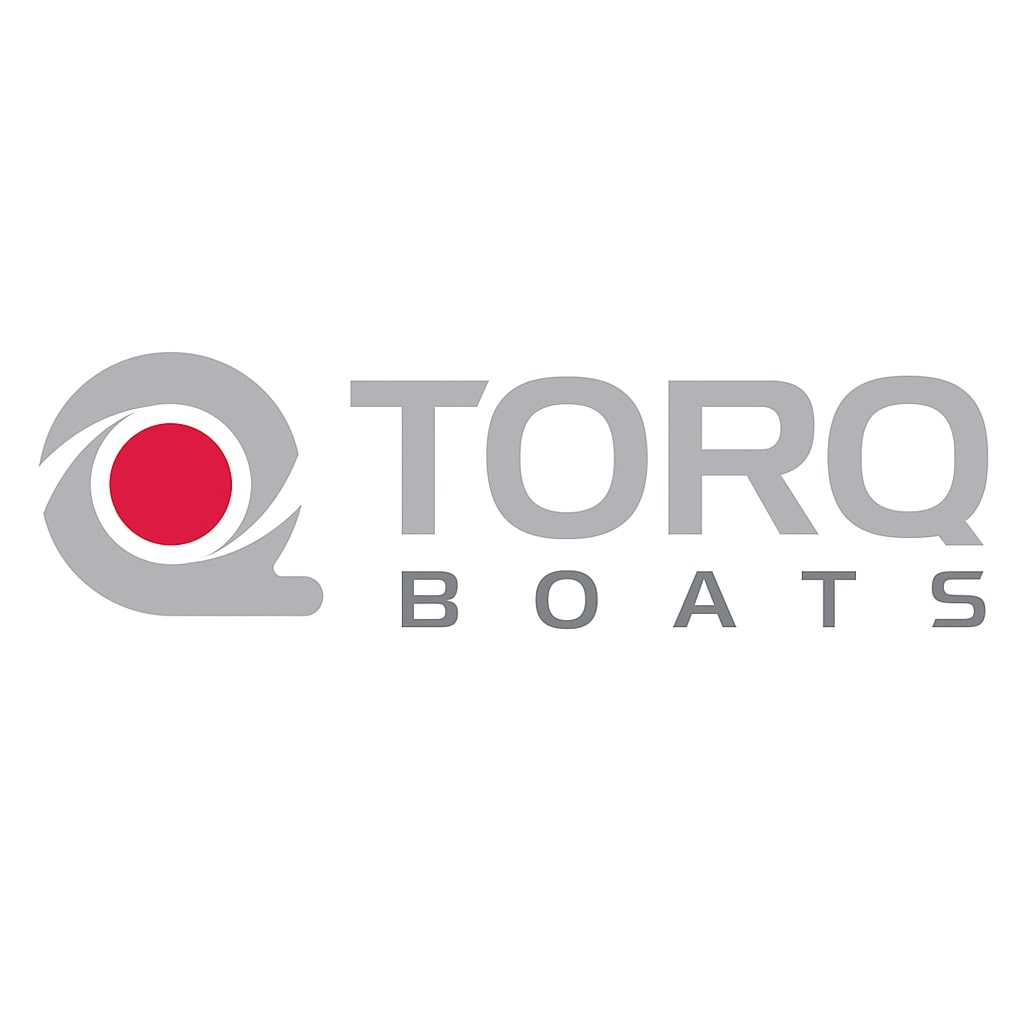
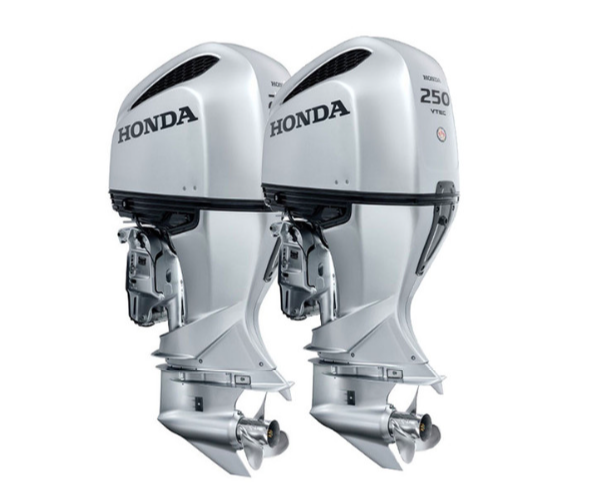
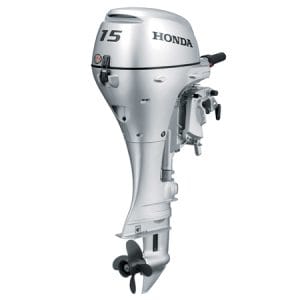
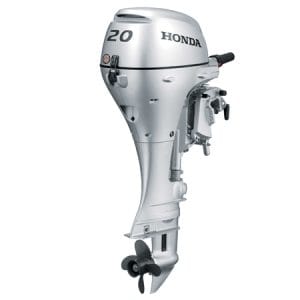
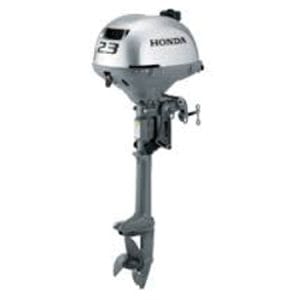
Reviews
There are no reviews yet.